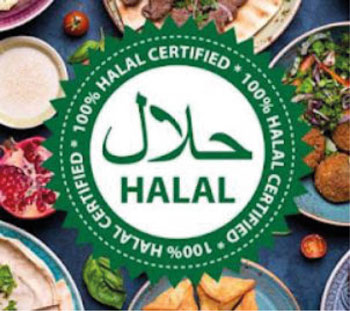The “GCC Halal Food and Beverage Market, Size, Forecast 2023-2027, Industry Trends, Growth, Share, Outlook, Impact of Inflation, Opportunity Company Analysis” report has been added to ResearchAndMarkets.com’s offering.
This report provides a detailed analysis of GCC Halal Food and Beverage Industry. GCC Halal Food and Beverage Market are expected to reach US$ 18.90 Billion in 2027.
Halal food is a term used to describe a group of foods and beverages produced primarily under Islamic dietary laws. Alcohol, pig by-products, and animals that are dead before slaughtering or not slain in Allah’s name are all deemed haram or unfit for eating, according to the law.
Furthermore, these food items are packaged and stored in utensils that must be cleaned according to Islamic standards.
Gulf Cooperation Council (GCC) Halal Food and Beverage Industry is expanding with a CAGR of 9.50% during 2022-2027:
The demand for halal food by-products in the GCC region is mainly driven by many Muslims who follow Islamic Sariah regulations as part of their religious beliefs. Furthermore, the demand is being driven by the growing number of stringent regulatory frameworks that include required halal labeling and certification standards for food and drinks.
Furthermore, increased knowledge of food safety, hygiene, and trustworthiness afforded by halal food items, particularly among non-Muslims, is boosting the industry across the Gulf Cooperation Council. In addition, a significant increase in the food retail sector and the increasing availability of halal food and beverages across various distribution channels are also driving market expansion.
The disturbance of the halal food and beverage industry’s outlook caused by COVID-19’s rapid spread harmed market growth in 2020. Surprisingly, the market directly impacted production and demand, disrupting supply chains and needs and affecting businesses and financial markets financially. Consumer preference for healthy, nutritious, and safer products, on the other hand, is growing.
The favorable evolution of consumers’ preferences towards safe and high-quality halal products is predicted to strengthen this market in the upcoming years. According to the publisher, Gulf Cooperation Council Halal Food and Beverage Market Size was US$ 10.96 Billion in 2021.
Meat, Poultry, and Seafood Segment have one of the Highest Market Share:
In the GCC Halal Food and Beverage Industry, meat, poultry, and seafood items have the highest market share because of their vast reach and appeal. Besides, due to rising affluence and healthy eating trends among consumers, emerging economies such as the UAE, Kuwait, Saudi Arabia, Oman, Qatar, and Bahrain are likely to make significant contributions to the halal meat and poultry business growth.
Furthermore, the increased demand for packaged processed beef products, regarded as hygienic and high-quality, is likely to propel segmental expansion in the coming years. —Business Wire










